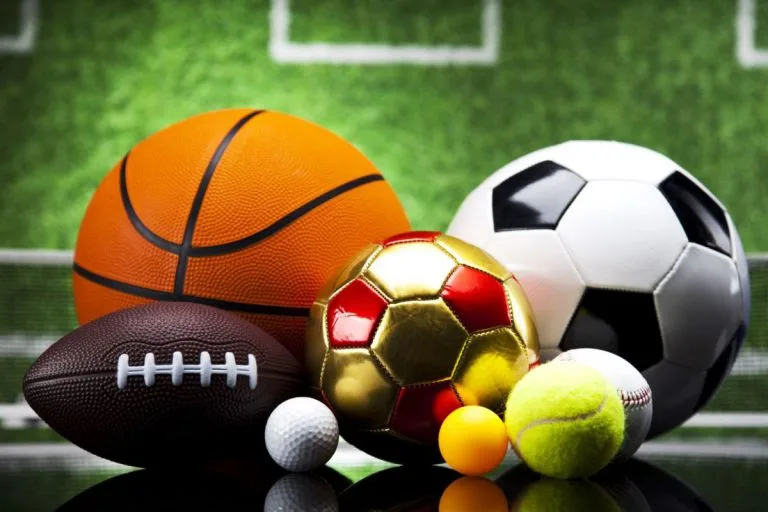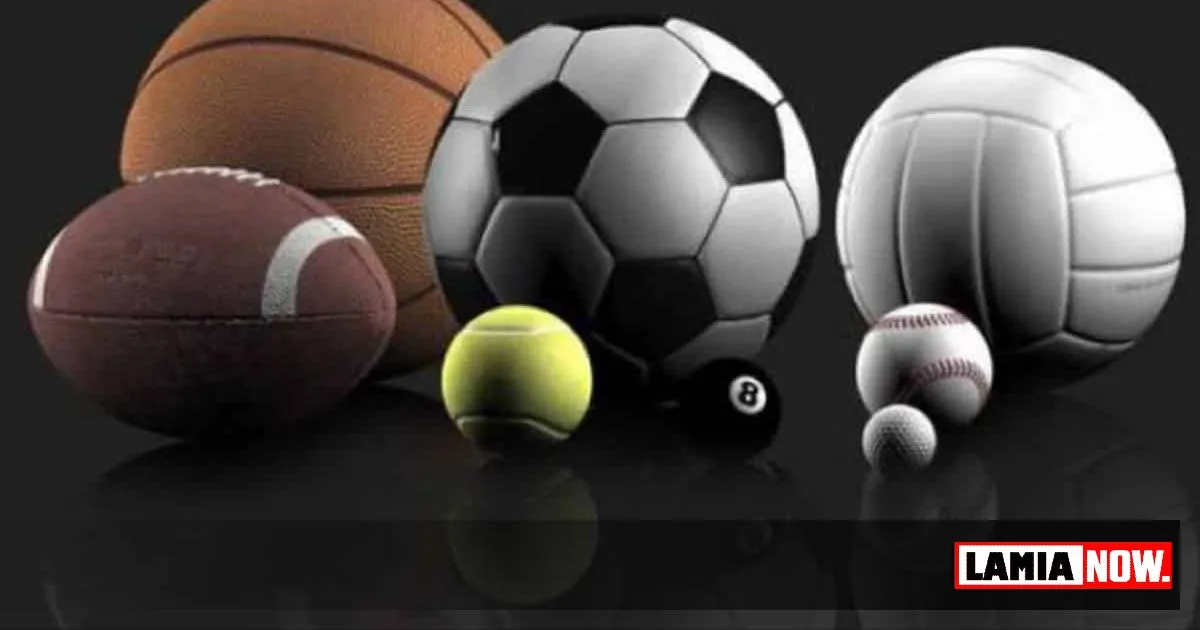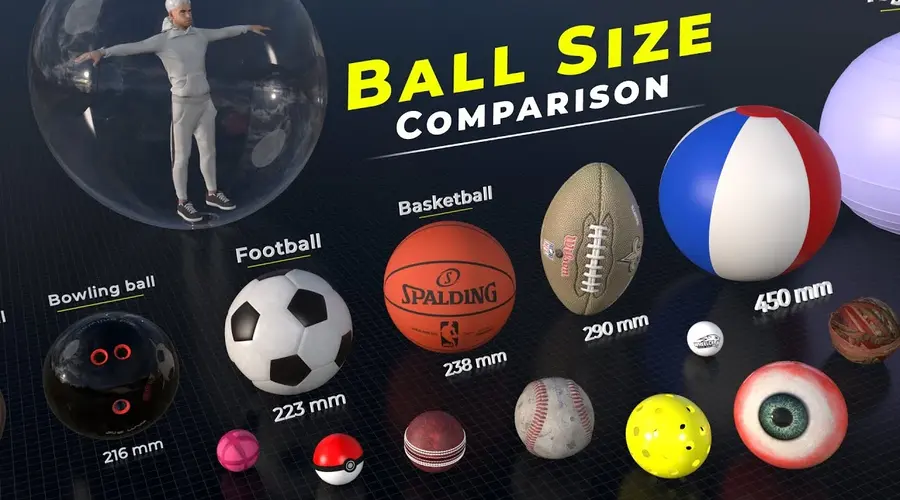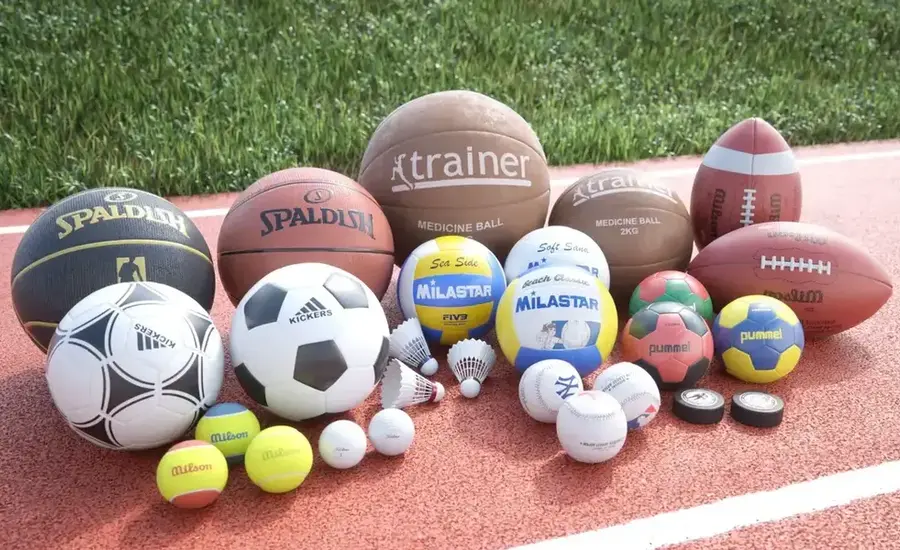Let’s talk about sports balls You see them everywhere—on fields, courts, and in your living room if your kids are playing. But how much do you really know about them?
Whether you’re a parent, a sports fan, or just someone looking to pick up a new hobby, understanding the different types of sports balls can significantly enhance your experience and enjoyment of the game.
From cricket to basketball, sports balls come in all shapes and sizes. In Australia, we’re fortunate to have a variety of sports that utilize different types of sports balls.
In this guide, we’ll dive into the world of sports balls. Specifically, we’ll explore everything from mini sports balls to kids’ sports balls. Along the way, we’ll also discuss tips on how to draw sports balls, where to find sports balls images, and even some fun coloring pages.
So, grab your drink, sit back, and let’s get started!
Types of Sports Balls
When it comes to sports balls, there’s no shortage of options out there.
To illustrate, here’s a quick rundown of some popular types:
1. Football (Soccer Ball)
- Size: Standard size 5 for adults; smaller sizes for kids.
- Use: Played in leagues, schools, and on weekends.
2. Australian Rules Football
- Size: A unique shape, oval and larger than a soccer ball.
- Use: A beloved Aussie sport.
3. Basketball
- Size: Usually size 7 for men and size 6 for women.
- Use: Played indoors and outdoors.
4. Cricket Ball
- Size: A hard, red ball used in traditional matches.
- Use: The centerpiece of the sport.
5. Tennis Ball
- Size: Standard size for all ages.
- Use: Essential for tennis matches.
6. Golf Ball
- Size: Small and dimpled.
- Use: Used in golfing; precision is key.
7. Volleyball
- Size: Standard size, lightweight.
- Use: Played on beaches and in gyms.
This is just a start.
In fact, there are many different sports balls, each serving a unique purpose.
Exploring Different Sports Balls

Have you ever stopped to think about the materials that go into making these sports balls?
Most sports balls are crafted from high-quality materials like rubber, leather, or synthetic composites.
- Rubber Sports Balls: These are common for outdoor use, as they’re durable and can handle rough conditions.
- Foam Sports Balls: These are great for kids! They’re lightweight and less likely to cause injury.
- Mini Sports Balls: Perfect for little hands.
Each type of ball can affect gameplay significantly.
The Importance of Choosing the Right Sports Ball
Now, let’s discuss why choosing the right sports ball is crucial for performance and enjoyment.
Here’s why:
- Skill Development: Using the correct ball helps players develop their skills more effectively.
- Safety: The right size and weight mean safer play, especially for kids.
- Durability: High-quality balls last longer and provide better playability.
Fun Activities with Sports Balls
Now that you know about sports balls, let’s have some fun with them!
Drawing Sports Balls
Want to learn how to draw sports balls? Here’s a simple method:
- Choose Your Ball: Decide which sport you want to draw.
- Basic Shapes: Start with simple circles or ovals.
- Add Details: Include seams, logos, and any other unique features.
- Color It In: Use your favorite colors!
Additionally, you can find sports balls SVG files online for digital projects.
Sports Balls Clipart and Images

If you’re into crafting or digital design, check out sports balls clipart and sports balls images available for download.
These can be used for everything from invitations to educational materials.
Printable Sports Balls Coloring Pages
Coloring is not just for kids.
In fact, you can download printable sports balls coloring pages for some relaxing downtime.
You can find a variety of designs featuring different sports ball that can ignite creativity.
Chocolate Sports Balls: A Treat for Fans
Did you know you can enjoy sports balls in more than just play?
Chocolate sports ball are a fun treat for game days or birthday parties.
They’re often shaped like different sports balls and are a hit among kids and adults alike.
The Evolution of Sports Balls
Sports ball have come a long way.
To illustrate, early versions were often made from animal skins, while today’s balls boast advanced materials and technologies.
- Historical Balls: The first basketballs were brown leather. Now, they’re vibrant and designed for better grip.
- Modern Developments: Many sports balls now have moisture-wicking properties and are designed for enhanced aerodynamics.
Caring for Your Sports Ball
Once you have your perfect sports ball, how do you keep them in top condition?
Here are some quick tips:
- Storage: Keep them in a cool, dry place.
- Cleaning: Wipe them down with a damp cloth after use.
- Inflation: Check pressure regularly. Over-inflated balls can burst, while under-inflated ones won’t perform well.
Sports Balls by Size: What You Need to Know

When purchasing sports ball, size matters.
Here’s a simple guide:
- Standard Sizes: These are typically used in professional settings.
- Youth Sizes: Smaller versions designed for kids to help with skill development.
- Mini Sports Ball: Perfect for toddlers or young children.
Understanding the size is crucial for safety and effectiveness.
Popular Sports Ball for Kids
If you’re shopping for kids sports ball, look for:
- Soft, foam balls for young children.
- Lightweight options for developing skills.
- Fun designs featuring their favorite teams or characters.
Fun Facts About Sports Balls
Here are some quirky facts to share with your friends:
- The soccer ball is known as the most popular ball in the world, played by millions globally.
- Basketballs were originally brown; they became orange to improve visibility.
- The first rubber footballs were created in the late 19th century.
- Tennis balls were once white; they changed to yellow for better visibility on television.
FAQ:
1. What are the different types of sports ball?
There are various types of sports ball designed for specific sports. Some common ones include:
- Footballs (Soccer balls)
- Basketballs
- Volleyballs
- Rugby balls
- Tennis balls
- Golf balls
- Baseballs
- Cricket balls
Each ball has unique properties like size, weight, and material to suit its sport’s requirements.
2. What size sports ball should I choose?
The size of the sports ball depends on the sport and the age group:
- Football (Soccer): Sizes 3 (kids), 4 (youth), and 5 (adult).
- Basketball: Sizes 5 (kids), 6 (women/youth), and 7 (men).
- Volleyball: Standard size for all age groups. Check the sport’s regulations to determine the right ball size for your needs.
3. What is the standard weight of a sports ball?
Each sport has specific guidelines for the weight of its ball:
- Football (Soccer): 410-450 grams.
- Basketball: 567-650 grams.
- Tennis ball: 56-59.4 grams.
- Golf ball: 45.93 grams. These specifications ensure consistent gameplay.
4. How do I maintain a sports ball?
Maintaining a sports ball involves:
- Inflating to the correct pressure (check the ball’s recommended PSI).
- Storing in a cool, dry place.
- Cleaning with a damp cloth after use to remove dirt and debris. Proper care can prolong the life of your ball.
5. What materials are sports ball made of?
Most sports ball are made of a combination of:
- Leather or synthetic leather for outer layers (football, basketball).
- Rubber for the inner bladder (used for inflation).
- Foam or plastic for indoor balls or soft-play balls. Each material provides durability, grip, and the right bounce for the sport.
6. Can I use any sports ball indoors and outdoors?
Some sports ball are designed specifically for indoor or outdoor use:
- Outdoor balls are typically more durable and weather-resistant.
- Indoor balls are often lighter and have softer materials to protect indoor surfaces. Always check the ball’s label or description to ensure it’s suitable for your playing environment.
7. How do I know if my sports ball is over or under-inflated?
To check if a ball is properly inflated:
- Feel the firmness: An over-inflated ball will feel rock hard, while an under-inflated ball will feel soft and may have poor bounce.
- Bounce test: Bounce the ball from a set height and observe if it reacts as expected for the sport. Many sports ball come with a recommended PSI (pounds per square inch) that can be checked with a gauge.
8. Can I customize a sports ball?
Yes, many companies offer custom sports balls where you can add logos, designs, or text. This is popular for team branding, personalization, and gifts. Be sure to check the ball’s material compatibility with printing or customization options.
9. Where can I buy high-quality sports ball?
High-quality sports ball can be purchased from:
- Sports stores like Dick’s Sporting Goods, Sports Direct, and Academy Sports.
- Online retailers like Amazon, eBay, and dedicated sports websites.
- Specialty shops for professional-grade balls (ideal for tournaments and official games).
10. How long does a sports ball last?
The lifespan of a sports ball depends on usage and care. A well-maintained ball can last:
- Recreational use: 1-2 years.
- Professional use: A few months, especially if used daily. Proper storage, cleaning, and regular inflation checks can help extend its life.
Embrace the World of Sports Ball
Now that you’re armed with knowledge about sports ball, it’s time to get involved. Whether you’re playing in your backyard, joining a local league, or just having fun with friends, sports ball are a gateway to enjoyment and fitness.
So, next time you kick, throw, or bounce a sports ball, remember all the thought and engineering that went into making that simple object a key part of so many experiences.
Ultimately, embrace the fun and excitement that sports ball bring to our lives!
Additional Resources
If you want to dive deeper into the world of sports balls, consider checking out these resources:
- Local Sporting Goods Stores: They often have knowledgeable staff who can help you choose the right ball for your needs.
- Online Tutorials: Many websites offer step-by-step guides on playing different sports or using sports ball effectively.
- Community Centers: Often host events where you can try various sports and see what you enjoy most.
Call to Action
Now that you’re equipped with all this information, why not grab a ball and head outside? Get your family or friends together for a fun game, or practice your skills solo. Whatever you choose to do, remember that sports ball are not just equipment; they’re tools for connection, fitness, and fun.

